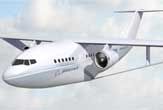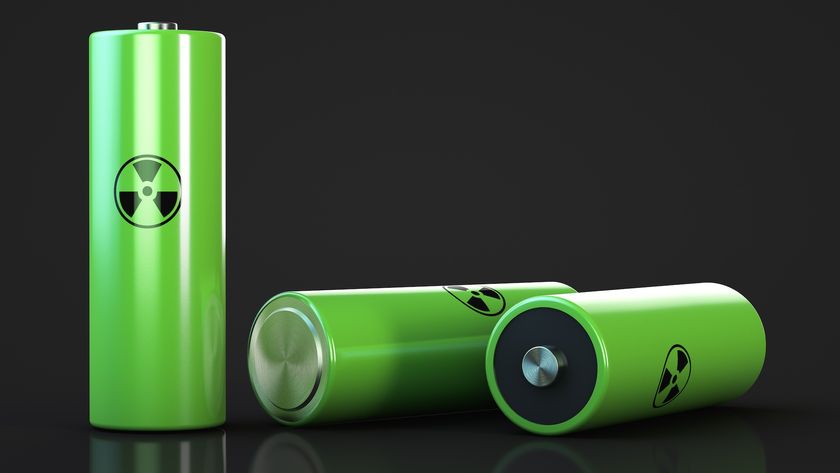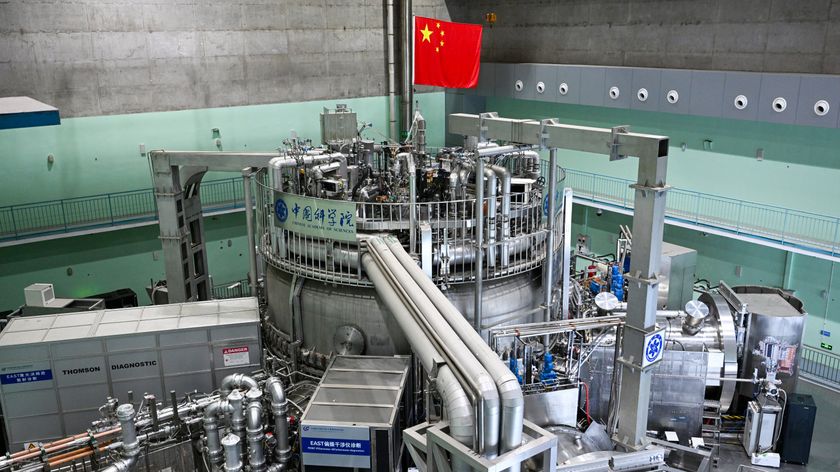Rising Fuel Costs Could Help Make Electric Planes a Reality

Passenger airliners could one day fly using electric or hybrid propulsion.
Such futuristic aircraft could help meet NASA goals to reduce jet fuel use by a startling 70 percent.
Although inventors are experimenting with a variety of electric aircraft, for the most part the idea of an electric airliner is regarded as fantasy in aviation since batteries are so heavy, explained aerospace engineer Zachary Hoisington at Boeing Research & Technology.
For instance, a regular airliner with 154 passengers and a range of 3,500 miles might weigh nearly 185,000 pounds at takeoff, and jet fuel would take up roughly a third of that weight.
To provide the same amount of energy as that jet fuel, it would take a whopping 5.5 million pounds of the kind of lithium ion batteries used in plug-in hybrid cars.
This is because jet fuel supplies a lot of energy for its weight — technically, some 11,900 watt-hours per kilogram — while those batteries offer about 200 times less.
However, in light of rising fuel prices and concerns about the environmental impact of fossil fuel use, researchers are taking the concept more seriously.
Sign up for the Live Science daily newsletter now
Get the world’s most fascinating discoveries delivered straight to your inbox.
"We're trying to predict the far-out future airliner," Hoisington said.
More efficient and quieter
Electric propulsion does provide some advantages. Besides avoiding concerns over emissions, electric motors are far more efficient than combustion engines.
"A normal jet engine is 40 percent efficient at converting fuel energy into mechanical energy, just as a conventional car motor is," Hoisington explained. "Most electric motors have an efficiency at converting electrical energy into mechanical energy in the 90s, with the big ones reaching 97 percent efficiency."
Since electric motors would not generate supersonic streams of exhaust, they would be quieter as well, he added.
A glimmer of hope for electric or hybrid airliners exists in advanced batteries under development right now. A number of lithium ion battery lab designs offer more than 750 watt-hours per kilogram, or more than 6 percent of the energy that jet fuel does pound for pound. More esoteric devices, such as lithium-air batteries and electrostatic nanocapacitors – which store charge on conductive surfaces with features just nanometers or billionths of a meter in size – might reach anywhere from 12 to 28 percent. "The assumption we make is that is that 20 or 30 years in the future, what exists today in the lab exists maybe on a shelf where you can buy it from," Hoisington said.
Battery propulsion even with these futuristic devices would offer just a fraction of the range seen with jet-fuel airliners, however.
The hybrid option
Another option engineers are investigating is a hybrid plane that runs on both fuel and electricity. For example, Boeing's Subsonic Ultra Green Aircraft Research (SUGAR) design is a hybrid airliner that relies primarily on electric propulsion for short flights, saving jet fuel propulsion for longer flights.
Such a plane "could easily blow past NASA's goal of 70 percent fuel reduction," Hoisington said. "That's a big goal to overcome."
Still, Hoisington noted this research "is the most far out piece of work at Boeing Research & Technology. It's definitely not near-term. If it does happen, it probably won't happen for 20 or more years."
Hoisington detailed his electric plane research at the CAFE Foundation electric aircraft symposium in Sonoma, Calif., last week.













